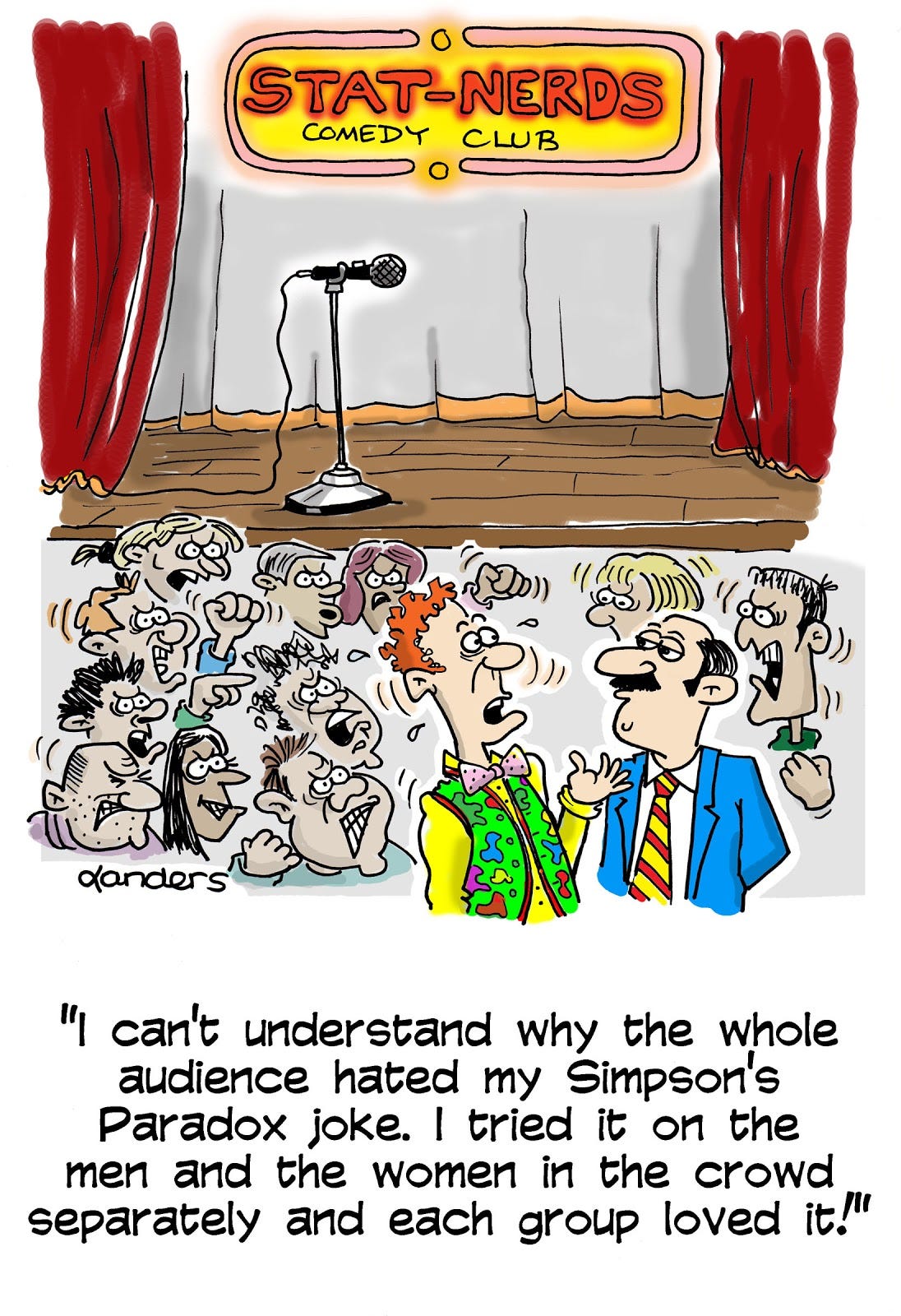Considering Simpson’s Paradox in Mobile Advertising

Benjamin Disraeli (British Prime Minister 1874–1880) is said to have coined the phrase “There are three kinds of lies: lies, damned lies, and statistics.” Improper use and understanding of statistics can lead to poor marketing decisions.
An example of this is Simpson’s Paradox, a phenomenon in which a trend appears in several different groups of data but disappears or reverses when these groups are combined.
One of the most famous examples of this is from a study of gender bias at UC Berkeley. In the 1970s, there was a period when the admissions data for the UC Berkeley graduate school exhibited some peculiar statistical correlations. Specifically, admission figures for 1973 showed a strong negative correlation between being female and being admitted: 35% of female applicants admitted, vs 44% of male applicants. This negative correlation was nearly the basis of a lawsuit alleging gender bias in the admissions process.
However, further investigation of data revealed that none of the individual departments’ admissions data exhibited this negative correlation between being female and being admitted. In fact, most departments reported a positive correlation between being female and being accepted. In other words, a correlation that appeared at the level of the aggregated data was reversed at the departmental level.
Below is an example of how the Simpson’s Paradox fallacy can cause marketers to misinterpret the results of their campaigns. In this simplified example from mobile advertising, the dataset is from an install campaign measuring the install rate performance, with data broken out by platform (iOS or Android).
Clearly iOS outperformed Android in this campaign, so the marketing director should allocate more budget to iOS devices for this campaign, right?
A deeper dive into the data, broken out by sub-platform (tablet or phone), shows a different story.

Android installs outperformed iOS on both sub-platforms, and yet the aggregated data shows iOS outperformed Android. How can both results be true?
In understanding Simpson’s Paradox, we must also understand the concept of a confounding (or lurking) variable. In this instance, the sub-platform (phone or tablet) introduces a bias: 38% of the iOS impressions occurred on tablets, whereas only 8% of Android impressions were on tablets.
In this instance, the marketing director should consider whether the splits between tablet and phone impressions accurately represent the target populations.
This is of course an overly simplified example, but it does originate from real-world experiences. When designing campaigns, marketers should try to consider the granularity of audiences, and the campaign setup should aim to surface confounding variables without being disproportionately complex relative to the overall budget.
If you would like to learn more about Simpson’s Paradox, the “Mathematical Games” column of the March 1979 issue of Scientific American (page 119 in the PDF) is a great read. As an added plus, there are some great period advertisements in the magazine. When is the last time you saw Lancia cars being advertised in the US, or a nice “What we’re doing for your health” PSA from Union Carbide?

More…
Rovio VP of advertising Jarkko Rajamäki discusses in-game ads approach
As part of our #InGameAdMonth with Pocketgamer.biz we spoke to Rovio’s VP of advertising Jarkko Rajamäki to learn more about the publishing giant's in-game advertising and how developers can take advantage of the new opportunities being created by the format. Rovio...
Designing for InGamePlay Brand Ads
Download V3 of our Integration Guide AdInMo’s InGamePlay brand ads are seamlessly integrated into mobile games. Crucially our ads are click-free which means they don’t interrupt gameplay and actually help player retention. It’s a great incremental monetization channel...
June Developer Shoutout
Each month we want to give kudos to our developer community. Mobile games development is a fine balance between designing the best games, keeping players happy and paying the bills. We get it. These are the developers pioneering the use of immersive ads in their games...



